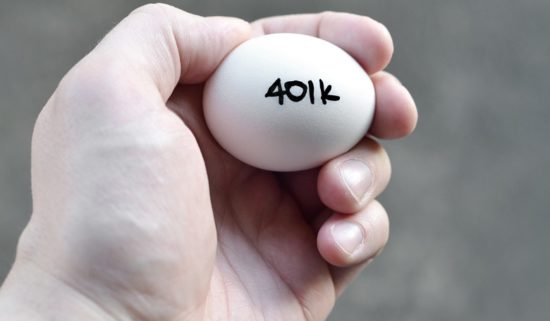
Approximately three-quarters of companies with 401(k) plans offer a matching program where the employer contributes an equal amount to the employee’s contribution up to a certain limit.
The employer’s matching contribution is extra money that you receive simply by contributing to your retirement account – in essence, free money.
Bypassing Free Money
If you don’t contribute to the matching limit, you are bypassing the opportunity to add this free money to your tax-deferred retirement funds.
Matching programs may offer dollar-to-dollar matches or percentage matches. According to 2015 data from the Deloitte Annual Defined Contribution Benchmarking Survey, the most common matching amount is a 50% match up to 6% of employee contributions (used by 18% of plan sponsors), followed by a 100% match up to 6% (used by 12%).
Under these programs, if you made $40,000 and contributed 6% of your salary ($2,400) to your retirement plan, your employer would contribute an extra $2,400 under a 100% match and $1,200 under a 50% match.
Unclaimed Money
Now, assume that you only contribute 3% of your $40,000 salary into your 401(k) plan. Your employer would then contribute $1,200 under a 100% match and $600 under a 50% match – and you would leave an equivalent amount on the table, unclaimed.
Failing to take full advantage of an employer-matching program applies a double hit to your retirement funds. Not only are you turning down money that you could have claimed, you are also losing out on the compounding of those funds over time.
The Motley Fool provides an example of an employee making $100,000 per year at an employer offering a 50% match in contributions up to a 5% limit. If you contribute up to the 5% limit, you will be adding $5,000 annually and your employer will kick in another $2,500. Assuming a 7% annual return on your investments, your nest egg will reach $708,000 in thirty years.
Another Scenario
Contrast that with a 3% contribution. You will be contributing $3,000 each year and your employer will be contributing $1,500. You’ve refused an extra $1,000 annually and contributed less to your own retirement.
Using the same growth assumptions as above, your nest egg will be approximately $425,000 in thirty years. That’s a potential drop of $283,000. How would your plans for retirement change with a $283,000 drop in funds?
Does your employer do automatic enrollment on a 401(k) program? Check the program rules. The default contribution level for automatic enrollment is usually different from the matching contribution limit. (Typical automatic enrollment levels are 3% of salary.)
You must request that your employer raise your contribution to the required matching limit – and if you can afford it, there’s nothing wrong with maxing out your 401(k) to the total dollar contribution limit ($18,500 for 2018 with an additional $6,000 catch-up contribution if you are over age fifty).
Okay in the Short Term
In some cases, it may be reasonable for a short time not to contribute to the matching limit of a 401(k) program. If you are paying down excessive debt, especially high-interest debt such as credit cards, the benefits may be worth missing out on an employer match – for a while. Those exceptions are few.
Take full advantage of any 401(k) matching program, at least up to the matching limit. Adjust your budget if necessary to devote the sufficient amount of your pay to the 401(k). When retirement arrives, you’ll be very glad that you did.
Regardless of where you plan to retire, the number one factor in ensuring that you can retire on your terms is your 401(k). Make sure that your 401(k) is maximizing its potential with this free analysis that checks your fees, fund mix, and other factors to help you hit your retirement goals.
This article was provided by our partners at moneytips.com. Photo ©iStockphoto.com/AnthonyRosenberg
If you enjoy reading our blog posts and would like to try your hand at blogging, we have good news for you; you can do exactly that on Saving Advice. Just click here to get started.
Read More
- Reconsider Roth IRA Contributions Over the Next Decade
- Should You Borrow Against 403(b), 401(k) or Other Retirement Plans?
- This Tax Mistake Will Cost You a 50% Penalty
- 40 and No Retirement Account — Now What?
- Avoid Outliving Your Retirement Fund
- Should You Really Postpone Your Retirement?
- Can You Put Cryptocurrency in Your IRA? Study Shows Interest.
- 25 Million Americans Forgot to Roll Over Their Retirement Plans When Changing Jobs
Comments